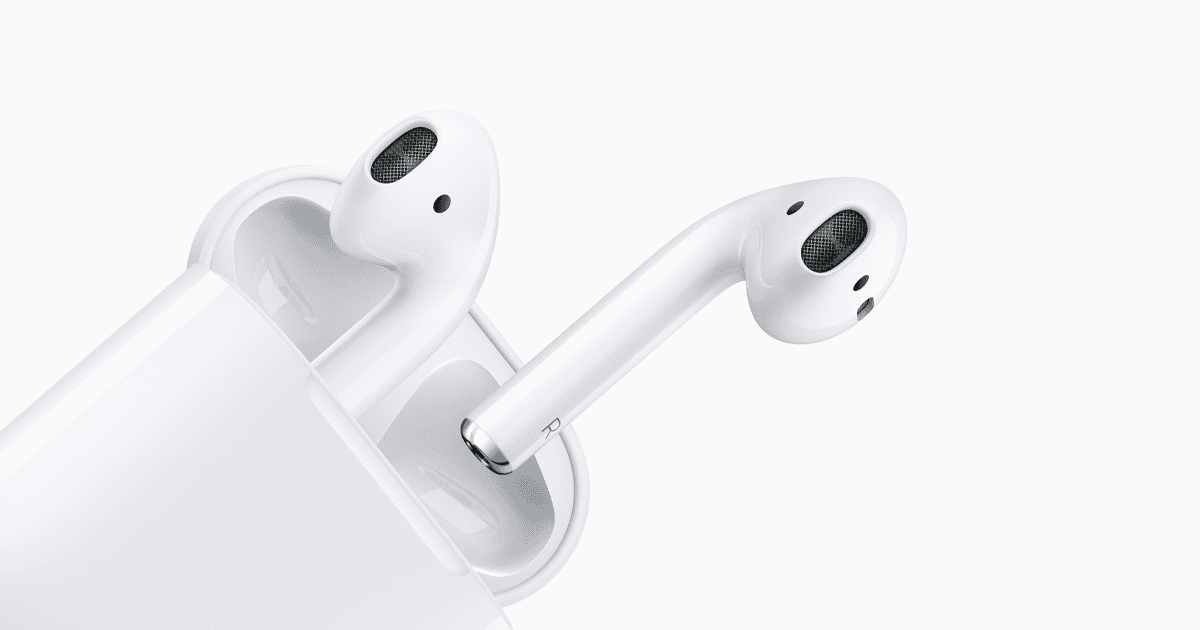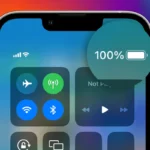Pairing AirPods with an iPhone should be quick and easy. But there are times when things go wrong and the devices won’t connect. This is a common problem users may face, and it usually has simple fixes. It’s important to know the right steps to troubleshoot without wasting time.
When AirPods fail to connect to an iPhone, the issue often lies with Bluetooth settings, battery life, or the need for a reset. Ensuring the AirPods are charged, the iPhone’s Bluetooth is on, and the devices are close together is essential. If these basic checks don’t solve the problem, further troubleshooting steps are available. These measures can help establish the connection between AirPods and iPhone, bringing users back to their audio experience.
How to Fix AirPods Not Connecting to Your iPhone
When your AirPods refuse to connect to your iPhone, it’s not just annoying — it can disrupt your whole routine. Whether you rely on them for calls, music, podcasts, or workouts, this common issue can be resolved quickly with the right troubleshooting. Below, we’ve compiled the most effective and up-to-date solutions to get your AirPods working again.
1. Make Sure Bluetooth Is On
This may sound basic, but it’s worth double-checking. Go to Settings > Bluetooth on your iPhone and ensure the toggle is green. If it’s already on, try turning it off for a few seconds and switching it back on. This simple toggle can reinitiate the Bluetooth handshake between your devices.
2. Check the AirPods Battery
Dead or low batteries are a common culprit. Place both AirPods into their charging case and let them charge for at least 10–15 minutes. Make sure the case itself has a charge — if not, connect it to power using a Lightning cable. When AirPods don’t have enough battery, they won’t even attempt a connection.
3. Restart Your iPhone
Restarting clears temporary glitches in iOS that might block Bluetooth connections. Hold the power and volume buttons (or just the power button on older models) to bring up the slider. Power down, wait a few seconds, then restart your phone.
4. Forget Your AirPods and Reconnect
This is one of the most effective fixes:
- Go to Settings > Bluetooth.
- Tap the “i” next to your AirPods.
- Select Forget This Device.
- Put your AirPods back in their case, close the lid, then reopen it after 15 seconds.
- Press and hold the button on the back of the case until the light flashes white.
- Hold the case near your iPhone and follow the on-screen pairing instructions.
This process resets the connection and often resolves stubborn pairing issues.
5. Reset Network Settings
Resetting your iPhone’s network settings can fix deep-seated Bluetooth or Wi-Fi conflicts. Be warned — this will also erase saved Wi-Fi networks and passwords.
Go to Settings > General > Transfer or Reset iPhone > Reset > Reset Network Settings. After the reset, try pairing your AirPods again from scratch.
6. Update Your iPhone and AirPods
Outdated firmware can be the hidden cause behind connectivity failures. Make sure your iPhone is updated to the latest version of iOS by visiting Settings > General > Software Update.
Your AirPods update automatically when connected to your iPhone and placed in their charging case. To force an update, keep them plugged in and within range of your iPhone connected to Wi-Fi.
7. Disable Automatic Device Switching
If you use the same AirPods across multiple Apple devices, they may try to connect to the wrong one. You can change this behavior by going to Settings > Bluetooth, tapping the “i” icon next to your AirPods, and selecting Connect to This iPhone > When Last Connected to This iPhone.
This disables the automatic switching feature, which can prevent the AirPods from unexpectedly jumping between devices and failing to connect when you need them most.
8. Check for Interference or Hardware Damage
Bluetooth operates in the 2.4GHz range — the same as many Wi-Fi routers, microwaves, and other electronics. Try moving away from crowded areas or turning off nearby wireless devices to reduce interference. Also inspect your AirPods and case for damage. If the case doesn’t close properly or the AirPods don’t sit correctly, charging and connection could be compromised.
9. Clean Your AirPods and Charging Case
Debris in the charging contacts can interfere with power delivery. Use a soft, lint-free cloth to clean the contacts inside the case and the metal ends of each AirPod. Avoid using liquids or compressed air. A clean connection point ensures proper charging and syncing behavior.
10. Still Not Working? Try These Last-Resort Options
- Use AirPods With Another Device: Try pairing with a different iPhone, iPad, or Mac. If they connect there, the issue is likely with your iPhone and not the AirPods.
- Check for Apple ID Conflicts: If you’re signed into multiple Apple IDs across devices, it might confuse iCloud syncing. Try signing out and back in on the affected iPhone.
- Contact Apple Support: If all else fails, a hardware issue could be at fault. Apple can run diagnostics and potentially replace a faulty AirPod or case under warranty.
Quick Recap of Fixes
- Turn Bluetooth off and on
- Charge AirPods and the case
- Restart your iPhone
- Forget and re-pair your AirPods
- Reset network settings
- Update iOS and AirPods firmware
- Disable automatic switching
- Avoid signal interference
- Clean AirPods and the case
With these steps, most users will be able to fix AirPods connection issues in minutes. If your AirPods are still acting up after trying everything, you might be dealing with a rare hardware defect or a deeper iOS bug — in which case Apple’s support team is your best next move.
Key Takeaways
- Connecting AirPods involves ensuring they are charged, and Bluetooth is enabled.
- Basic troubleshooting includes checking settings, battery, and proximity.
- Advanced steps cover resetting AirPods and seeking Apple support if needed.
Initial Setup and Connection Troubleshooting
Connecting AirPods to an iPhone should be quick and easy. However, users may sometimes face issues. This section provides guidance for resolving connection troubles during the initial setup of AirPods.
Verifying Bluetooth and iOS Settings
Users should first ensure that Bluetooth is enabled on their iPhone. They can do so by opening the Settings app and tapping on Bluetooth. It is important to check that the iPhone runs the latest iOS version. Users can update iOS in Settings under General and then Software Update.
Checking AirPods Battery and Charging Status
The AirPods battery level needs to be sufficient for pairing. Placing the AirPods in the charging case and checking the status light can confirm if they are charging. A steady, amber light indicates charging, while a green light shows a full charge.
Performing a Proper AirPods Reset
To reset AirPods, users should place them in the case and close the lid for 15 seconds. Then, with the lid open, they press the setup button on the case until the status light flashes white. This indicates that AirPods are in pairing mode.
Ensuring Firmware and Software Updates
AirPods work best with the latest firmware and software. Users should keep their iOS device up to date to avoid compatibility issues. Connecting AirPods to an iOS device typically prompts any needed AirPods firmware updates.
Troubleshooting Connections with Other Apple Devices
For AirPods not connecting to iPad or Mac, users should ensure that they signed into iCloud with the same Apple ID across devices. They should also check that the iPad runs the latest iPadOS and the Mac the latest macOS. If issues persist, restarting the device may help.
Advanced Troubleshooting and Support
When basic steps don’t solve AirPods connectivity problems, it’s time to try more advanced solutions. This section guides you through persistent issues, handling physical obstructions, and when to seek further support.
Addressing Persistent Connectivity Issues
Sometimes, issues linger despite standard fixes. For AirPods that won’t stay connected, try these steps:
- Restart your iPhone: Hold down the power button, then slide to power off. Power it back on after a minute.
- Forget the AirPods and then reconnect: Go to Settings > Bluetooth, tap the “i” next to your AirPods, and choose Forget This Device. Then, pair them again by holding the button on the AirPods case.
Dealing with Physical Obstructions and Cleanliness
Good AirPods performance relies on clear paths and cleanliness:
- Remove obstructions: Keep your iPhone and AirPods close without barriers between them.
- Clean your AirPods: Gently wipe the AirPods with a soft, dry, lint-free cloth. Clear earwax or debris that might block sound.
Seeking Assistance from Apple Support
If issues remain, contact Apple Support for help. They can troubleshoot:
- Connection problems
- No sound issues
- Persistent disconnections even when within range
Provide details about your AirPods model, and whether you’re using a wireless charger or a Lightning cable.
Considering Replacement or Repair Options
In some cases, you might need repairs or a replacement:
- Check your warranty: Determine if your AirPods are under warranty for free service options.
- Inspect for hardware issues: Apple may need to check if there’s a physical problem with your AirPods.







